Five Dimensions of Digital Transformation..
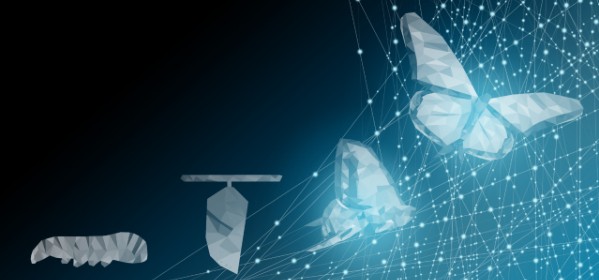
Five Dimensions of Digital Transformation..
So, What’s the difference between Digital optimization and Digital transformation?
Many of us are interchanging Digital transformation as it relates to improved productivity, greater customer / user experience and even greater revenue generation of existing streams, but that’s not Digital Transformation. It is Digital Business Optimization.
Digital Business Transformation is all about pursuing new revenue streams, product/services and business models - industry in disruption, or want to disrupt. There are there key tenets to Digital Business Optimization..
- Improve productivity by removing cost, improving productivity of machines and employees. The IoT can improve asset productivity. Robotic process automation can improve employee productivity, and so can a digital workplace.
- Improve existing revenue by leveraging analytics and AI to better forecast demand/supply and optimize prices and promotions.
- Improve the customer experience: AI in the form of virtual assistants can also improve the customer experience.
According to Gartner’s 2018 Digital Business Strategy survey, Growth tops the list of CEO business priorities in 2018 and 2019. However, the survey found that as simple, implemental growth becomes harder to achieve, CEOs are concentrating on changing and upgrading the structure of their companies, including a deeper understanding of digital business.
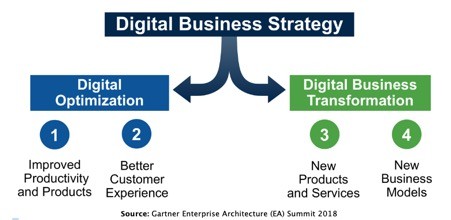
Digital transformation, however, is the process of using digital services / technologies to create new or modify existing business processes, culture, and customer experiences to meet changing business and market requirements. As digital technologies offer new ways to connect, collaborate, conduct operations and build bridges between people, it touches the core of all socio-economic aspects of govt entities, departments, or largely enterprise business functions in the way there were traditionally operated and/or managed and thus getting digitally transformed with or without their intent.
Digital transformation is dependent on managing the exponential growth, intrinsic value and ability to harness data into insights..
Digital transformation is key to transformation of businesses, government entities towards social reforms, whole segment of social communication, mass media and science and education at the core. The user experience and enablement via digital services is largely driven by the data, devices and data centers in the recent past to attain goals of digitization for digital maturity. Of course, larger role being played by Automation and AI/ML yet the significance of data science remains undoubted since together they do help create major traction for new business opportunities / markets and productivity gains are often reinvested in economies bringing about a positive social impact.
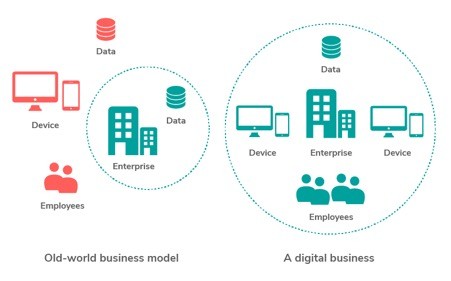
Digital strategy now is the most relevant to changes in business models, and uses technology to create the capabilities a company needs to become a digital business. Setting down a strategy is a key component of the digital transformation process and ensures that technology is being implemented in a way that supports the value addition towards collective business objectives.
Typically, the next wave of digital transformation is led by / through new frontier technologies including Blockchain, Automation, and a large set of smart, artificial-intelligence (AI)- based technologies, all leveraging the difference tenets of data science, datasets and co-relations thereof. In the recent past, just about a decade internet has seen burst of data at an unprecedented scale, today we have smart phones, wearables, connected TVs, IoT devices, Industrial automation systems and sensors resulting in 100+Bn Transactions. The entire premise of digital transformation is interrelated and complex integration of several processes, technologies, skills that it has now become more than a charter onto a full-fledged ecosystem.
To Simplify the concept and ecosystem, I thought of five dimensions that can provide some insight onto their relationship and impact on digital transformation. These five dimensions are Data, Devices, Datacenter, Digital Identity & Digital Services and few attributes to these dimensions being elaborated to establish the role of each dimension herewith…
- Data / Datasets – Volumes, Models, Integrations & Security
- Devices / Sensors - IoT and Edge computing
- Data centres - Colo, Cloud & Containers to Context “As a Service”
- Digital Identity – Users, user accounts, user roles and digital persona
- Digital Services – Digitization, Applications & Frameworks and delivery thereof..
Role of Data in Digital Transformation.
General perception that might be closer to reality is that everyone is overwhelmed with data, making the ability to store, process, analyze, normalize, transform and consume the insights, and further act upon that insight remains a primary concern. For large-scale, multi-national organizations and those in heavily regulated industries such as finance, healthcare, or those covering multiple industry verticals the situation becomes even more complex and challenging due to data integrity, repudiation and security requirements.
Data and analytics are changing the very basis of competition and redefining their business models and harnessing competitive advantages. New digitally enabled business models can also have dramatically different cost structures that change the economics of industry supply significantly. Governments too is looking at connecting the dots via digital identities, digital transactions, digital surveillance and setting up data governance standards and regulations around the ownership, usage, storage and distribution.
On the social front, the individual expressions in mass communication via social circles and networks are dominating the user choices, adoption and influence collective inclination towards consumption, comparative views and preferences raising their expectations about products and services they consume from both industry and civic utility services. The trail of data such as transactions, interactions and feedbacks, if not seen in context of behavior semantics might raise a significant risk on the political and social fronts and may push unexpected outcomes of social change. While traditionally we labelled the data into two categories such as Active Data and Archival Data and moved our concepts further to Data Models all of these tenets are fundamentals of successful datafication strategies towards digital transformation and goals thereof. By 2021, prominent in-industry value chains, enabled by blockchains, will have extended their digital platforms to their entire omni-experience ecosystems, thus reducing transaction costs by 35%, says IDC.
The amount of Data created each day on the Internet in 2019 that number grew to 3.4 billion by 2016, and in 2017 300 million internet users were added, as of June 2019, there were over 4.4 billion active internet users. (Source IDC). The data generated, processed and stored is now no longer limited to legacy application transactions but goes beyond the traditional means encompassing all connected devices. The metadata along with data ingested from all such connected devices, web browsers, smart peripherals and online social channels (Read, user profiles, content and creatives) largely categorized as unstructured data or metadata ( read, data about data) is further put to use for gainful insights required by businesses, governments and individuals based on varied use cases of digital transformations. It was not too long ago that voice traffic dominated communications traffic but now it is video, virtual reality, autonomous driving, and a host of new IoT apps & sensors. Data is exploding, becoming mobile, and will continue to grow exponentially.
As per IDC, by 2020, 80% of enterprises will create data management and monetization capabilities, thus enhancing enterprise functions, strengthening competitiveness, and creating new sources of revenue. While data itself will become increasingly commoditized, value is likely to accrue to the owners of scarce data, to players that aggregate data in unique ways, and especially to providers of valuable insights. Such digital footprints / outcomes may also include unique set of traceable digital activities, actions and content that is manifested on the internet, telecom networks or on connected digital devices ramifications of which is seen reflecting over important compliance concerns and resulting in regulations such as GDPR, HIPAA, PCI, PDP Bill and others safeguarding the data privacy and security. (This data security is another topic itself and warrants another discussion/article...!)
Devices too are making their dent in Digital Transformation Agenda
Devices are a huge source of the 2.5 quintillion bytes of data created every day, contributors are not limited to mobile devices, but IoT and embedded sensors, that make our TVs, Cars and Household appliances Smart, or make us breath and survive in hospitals, monitor our vitals on our wrists as wearables or running some computations on the edge i.e. the internet of things have a fair share or even larger share in producing this increasing amount of data. At the start of 2017, there were 394 billion mobile internet users.
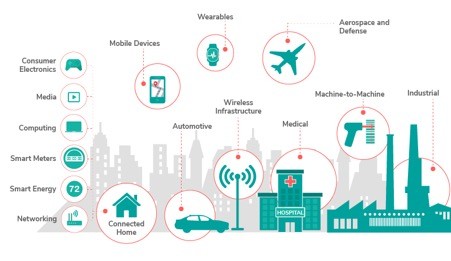
There are now over 5 billion mobile device users in 2019, almost 67% penetration of the entire global population. There were 28.3 million wearable devices sold in 2016 and estimates that 198 million will be sold in 2019. A 600% increase in just 3 years. Smart watches were 44.2% of the wearables market in 2019, and even anticipated to increase to 47% by 2023. According to IDC By 2020, the need to secure growing volumes of dispersed data generated at edge locations will have driven 40% of enterprises to set up and operate data vaults in multiple colocation facilities.
These staggering figures tell us the hidden stories of the multifold increase of the data and the role devices play in creation and consumption cycle. These devices are enabling digital transformation via how we produce, source, consume the data which was beyond our reach few decades ago. A key advantage of leveraging connected devices is that an organization will gain access to valuable data, like consumer behavior, buying patterns, individual preferences, etc. What this allows the organization to do is gather, monitor, and analyze consumer behavior via advanced analytics and proactively offer value-added experiences.
The IoT enablement at the field and the edge is making historical wins when it comes to data collection at source, the smart devices, sensors, embedded chips are making remarkable contribution to Digitization journey. Digitization has been the major source of true insights of machinery and/or modules that were analog and were siloed or isolated from mainstream data that was consumed partially or was ignored completely. The smartness of these digitally enabled devices, digital twins, sensors or machines have imminent role in the industrial automation and productivity / efficiency gains garnered via digital transformation. The emerging IoT ecosystem has provided immense value via enabling ingestion of data, establish remote online connectivity and orchestrate convergence of multiple technologies, real-time analytics, machine learning, commodity sensors, and embedded systems. The possibilities are endless...
Digital transformation is driving Data centers to reinvent themselves…
Data centers are now home to artificial intelligence engines, vast distributed cloud ecosystems, blockchain solutions, advanced connectivity architectures, high-performance computing platforms, drivers of big data platforms and unified storage just to list a few realities to set the context, anything and everything you need to digital journey is co-located, cloudified or containerized in the data center working round the clock somewhere providing high availability and secure infrastructure.
The legacy of colocation of hardware, morphed onto cloud and/or container / serverless computing architectures till new contextual “as a service” on demand models of digital services are becoming a reality. Of course, the sustainability of data centers on the modern age itself being reinvented since as per IDC the average datacenters in US are 12 years old, and are reinventing themselves for agility, scalability and architectures thereof apart from the platforms that keep changing dynamically. Enterprises are now choosing to move their workloads to cloud After 2020, most enterprises will shift internal investments to deploying dedicated cloud platforms from which to launch innovative services, rather than investing in modernizing existing datacenters, says IDC.
Data centers are increasingly being pushed to support denser configurations through compute, storage, power and cooling requirements that are able to outstrip the capabilities of traditional mechanical and electrical infrastructures. By 2021, 60% of enterprises will require access to power/cooling infrastructure operating at three times today’s standard to manage power-hungry accelerated compute systems' fluctuations and demands fulfilling digital transformation goals.
With growing footprint of the workloads, scalability and agility as objectives of IT and non-IT infrastructure, data center must now effectively and digitally transform their own infrastructure, processes, technologies and pricing models to meet the needs of today and tomorrow. They must now by virtue of design enable collaboration and consolidation fostering innovation and enablement of the digital transformation mandates at much faster pace yet remain reliable. According to IDC, By 2022, 50% of IT assets in enterprises’ datacenters will have the ability to run autonomously through use of embedded AI functionality that leverages smart IT and facilities systems.
Data center and cloud providers are experimenting with newer paradigms of Emerging platforms which are software driven dynamic compute resources (Read, CPU, GPU and FPGA), unified distributed storage platforms, open source frameworks, CI/CD toolsets and eco systems on hybrid and stackable resource pools thereof. New standards, such as GenZ and Cache Coherent Interconnect for Accelerators (CCIX), drive the incumbent PCI Express (PCIe) to faster speeds. PCIe 5.0 represents the latest in PCI standards using non-return to zero (NRZ) signaling; doubling the PCIe 4.0 speed from 16 giga transfers per second (GT/s) to 32 GT/s.
Since the devices are now expanding the perimeter of data center services, many datacenters are augmenting AI/ML in their DCIMs, agile yet fault tolerant hybrid and hyper converged platforms as they promote breakthroughs and faster time-to-market for novel distributed digital services. From the manual configuration of software and hardware to more automated and scalable techniques, API’s, Hardware Accelerators, Fast Gigabit (200GE) leaf and spine networks is what will be driving the evolution of data centers from design, operation and platform interoperability to name the few...
Connectivity being the foundational lever for any datacenter for delivery of hosted content, distributed digital services, IoT and API/RPC gateways allowing things / workloads to interact / communicate both internally and externally much quickly, continuously and securely. Mobile internet today has met the demands of bandwidth requirement along with speed with the onset of 5G and various short ranged wireless technologies thus it can deliver effective mobilization and manageability of content to the consumers, with plethora of CDNs and IXPs, the story is unfolding at a much larger and rapid scale… With the expectation of billions of devices connected to the internet, and the data-intensive real-time applications they will run, 100 gigabit Ethernet (GE) speeds which are common in data centers today will not be fast enough. In addition to planning the size and location of data centers, as well as considering a shift to virtualized network architectures, data center operators need to evolve the speed of their networks from 100GE to 400GE. Undoubtedly, one of the enablers of the digitization of business with its increasingly distributed infrastructure is the continued growth of high capacity, high-speed networks. To fully leverage the tremendous volume of data being produced and analyzed over multiple touchpoints, there must be networks that can adequately and securely transport it. So those networks need to be big (Read, bandwidth) fast ( Read, Low latency) and resilient (Read, fault tolerant) while being available when and where they are needed and those networks are here. As TeleGeography likes to say, “100G is the new 10G.” More high-speed networks are enabling bandwidth-hungry applications, and prices for 10G and 1G connections are all falling rapidly.
Context aware computing that will now be delivered via data centers will certainly need upskilling of technology / engineering teams that are responsible for innovation and adoption of services. These teams at all levels must be geared up about ecosystem awareness, experimentation with solution sets, tools and techniques looking at emerging trends and have an open heart for open / distributed system frameworks that warrants unlearning or the legacy mindset. Even for OEMs and ISVs this is a game changer to move away from selling perpetual licenses to “Pay as you go” or “As a service” model will open newer channels of sales and provides returns on the IPs created by these organizations with “Win-Win” proposition.
Digital Identity will be the key to unlock value delivered by digital transformation
The UN and World Bank ID4D initiatives set a goal of providing everyone on the planet with a legal identity by 2030 and chancess are this will be digital. Blockchain-based self-sovereign identity has been explored for decentralized digital ID architecture since 2018. According to the Breach Level Index, almost 15 billion data records have been exposed since 2013. In the first half of 2018, more than 25 million records were compromised every day – that’s 291 records every second. These include medical, credit card or financial data and other personally identifiable information. Investments in mobile technologies that capture, verify and authenticate identities based on a combination of identifiable attributes, will be a strategic step for service providers to enable security, trust and seamless end-user experience.
Digital transformation is reshaping the identity, authentication and authorization. Gone are the times when corporate networks had discernible perimeters, then organization conferred trust on a circle of known individuals (Read, Admins) by issuing usernames and passwords. The mobile and IoT devices have ushered the space and individuals or things need their fair share of legit access, validation tokens and thus managing identities is no longer a back-office IT and compliance function; it’s an essential enablement at the heart of the digital strategy and thus transformation. Identity is the link that connects an individual to his or her community. For public authorities, the key challenge in the next two years will be to create harmonious digital bonds that secure the relationship between new mobile identities and wider society and only possible through a public framework of trust, built on guarantees of private data protection and security. Trusted Digital Identity is thus paramount for each step of the digital transformation journey, from onboarding through to authentication to access these services.
In near future we shall see once again that measures taken to bolster security and combat fraud are generally well accepted by citizens. The Cambridge Analytica revelation mid-2018 was (once more) a good illustration for the need for a robust digital identity framework, privacy by design and regulation. Further the definition as it stands today, is a set of online attributes that work together to verify the identity of a person, legal entity or device. Trust comes from validation, in the age of APIs where information / data /transactions are happening digitally via remote API calls without manual intervention or supervision the access, authentication and authorization must be dealt with in accordance with strict regulations such as GDPR, HIPAA, PCI, eIDAS, PDP etc.
The process of aggregating and normalizing all the different characteristics of an identity profile into a single view, called identity unification or federated identity is a now becoming a norm, host of IdP Services are emerging and solving the larger problem of multiple ids, passwords for the same user onto different applications, systems and devices. While Identity providers today offer user authentication as a service across multiple third-party applications, such as web applications and mobile apps to outsource user authentication, they are becoming trusted identity provider. Such a relying party application is said to be federated, that is, it consumes federated identity.
The digital twin, often a virtual model of a process, product or service. This pairing of the virtual and physical worlds allows analysis of data and monitoring of systems to head off problems before they even occur, prevent downtime, develop new opportunities and even plan for the future by using simulations.
Digital twins today are becoming a business imperative, covering the entire lifecycle of an asset or process and forming the foundation for connected products and services. There will be billions of things represented by digital twins within the next five years. These proxies of the physical world will lead to new collaboration opportunities among physical world product experts and data scientists whose jobs are to understand what data tells us about operations. IoT devices are becoming cheaper, faster, smarter and more reliable. This has led to devices being attached to more and more things. Forbes has identified four distinct types of digital twin, all the way from an individual component to an entire business process.
Today, manufacturers of components – such as machine parts – are supplying products with their own digital twin. IoT data is, of course, only one element of a digital twin. You are creating a complete model or replica of the thing, so you require information from other sources such as your enterprise systems in order to build a complete and accurate picture. And, this is just the first integration hurdle. Gartner suggests that, by 2023, 75% of digital twins of IoT-connected products will have at least five different kinds of integration touch points, including IoT devices, people, applications and mobile apps.
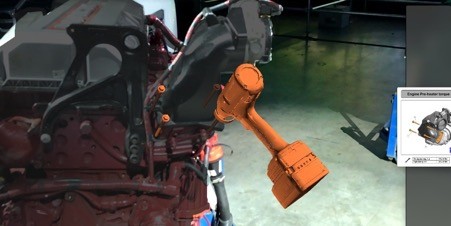
Digital twin challenges include a lack of interface to consume the decision-enhancing insights they create, particularly in the field where physical assets live and processes/work happens. Forward-thinking industrial enterprises are beginning to combine AR, digital twin and digital identity strategies to overcome these challenges and save time and money while improving the fidelity and value of each. By setting the correct digital identity to digital twin for legit access, authorization and communication levels for each, one can ensure that it only delivers the correct data to the unique digital twin. In the upcoming digital era, humans and machines do need to have secure and trustworthy digital identities. Only then data and values can be transferred reliably and securely. This means that the modelling and handling of data and tokens needs to reach higher levels of security and transparency as well as respect for data privacy. Blockchain-enabled systems can achieve all of that, and on top automated data and value transfer. This will enable very efficient processes that use digital twins, trusted machine or sensor data, smart contracts and trustworthy identities to settle them.
Digital Services, wherein value of digital transformation is delivered!
Although Digital Services refers to the electronic delivery of information including data and content across multiple platforms and devices like web or mobile, contextually all digital services drive true digital transformation with the power of emerging technologies with evolved perspective and rather consumption thereof. Not individually rather collectively digital services stack enables businesses to strategize, build, and leverage evolving technologies and create market-ready solutions with radical benefits and focused outcomes. In fact, it won’t be wrong if we say that digital transformation cannot be achieved without enablement via digital services, the content and the context delivered from source with destination while it transforms the way consumers interact and associate their requirement is real time, online and pure play of digital services.
Today digital services spans from ecommerce, ticketing, retail, digital payments, Content Mobility, portals and websites, internet of everything to ingests, transforms and visualizes insights that are digitally delivered and consumed has a fundamental connect with one or multiple digital services. Digital services stack/ecosystem enables businesses to strategize, build, and leverage evolving technologies and create market-ready solutions with radical distinguishable benefits for sure.
Digital services strategy is dictated by the objectives of the organization augmenting and providing these services to stakeholders, for example Digital India is a great use case that can help understand role of digital services in the digital transformation campaign launched by the Government of India in order to ensure the Government's services are made available to citizens electronically by improved online infrastructure and by increasing Internet connectivity or by making the country digitally empowered in the field of technology. This initiative includes plans to connect rural areas with high-speed internet networks. Digital India consists of three core components: the development of secure and stable digital infrastructure, delivering government services digitally, and universal digital literacy etc. Digitally delivering government services in itself is a component of digital strategy and further split into numerous interrelated initiatives. It is also difficult to scale up initiatives to affect all Indians, and fundamental attitudinal and institutional change is identified as a challenge while furthering the adoption of these digital services.
On the enterprise level, digital services are predominantly driven by their consumers on their most preferred device. Mobile. This is being driven by a near-perfect confluence of supply factors such as falling bandwidth prices, low handset prices, rapid rollout of 3G/4G, and demand factors such as rapidly rising affluence, fast growing user base across demography, mobile technology becoming affordable to large population who have previously had limited opportunities to connect with each other efficiently, effectively and most important economically.. This rapid digital adoption is driving a “mobile-first” ecosystem, with mobile at its heart. Coupled with India’s track record in innovation ( Read, Juggad), digital adoption has the potential to create massive disruption in consumption of digital services offered by the Glocal enterprises / companies. There are many obvious examples, including but not limited to social media networks, e-commerce platforms and shared mobility apps, of companies that have managed to harvest and leverage the mobile-first phenomenon and seen tremendous success on adoption or consumption, largely to say there were computer learning classes for masses but never seen a class offering to teach usage of smart phones.
Increasing mobile internet penetration is narrowing the information divide between rural and urban consumers, this fact is noted by the only digital companies and have already leveraged their market share on consumption. These consumers will also be more informed than ever before, having had higher exposure to local and global brands, as well as access to internet and smartphones in their formative years with greater ability to network with their peers, friends and families. Although their spendability based upon their income levels will dictate the size and composition of their consumption basket, but the more educated and technology-savvy consumers in each income segment will drive the most significant consumption opportunities across segments. The next innovations in the consumer space will not necessarily be product innovations, but digital innovations fostering entire product, service, and/or experience offering, or could be around product and distribution value chains, yet all delivered via online digital services for sure.
Optimizing the manufacturing process is not a new idea. Identifying ways to improve operational efficiency, reduce manufacturing costs, increase worker safety, accelerate time to market, and ensure quality and compliance, are pillars of the industry.
In Summary, Organizations are at different places in the digital transformation journey, of course. But speed has become a business imperative for all. IT leaders face pressure to show that digital initiatives continue to translate to increased agility and speed for the entire organization.
The adoption of upgraded technology does not ensure digital success, as much as being digitally fluent doesn’t refer to be a master’s in technologies. It actually calls for the ability to articulate the value of digital transformation to the organization’s future. the role of digital technology is shifting, from driving marginal efficiency to be a catalyst of innovation and disruption. There is going to be a big transformation in our production, distribution, and consumption systems. There is no escape from having to embrace game-changing technologies, such as artificial intelligence (AI), the Internet of Things (IoT), autonomous vehicles, drones and robotics, and managing the massive digital transformation of business and operating models that will ensue. This means that in the coming years, a number of decisions organizations, government stakeholders must make to avoid or risk falling prey to competitors and disruptors, or even winning the voters is inevitable without digital transformation, What say?
***
Sept 2019. Compilation from various publicly available internet sources, authors views are personal.